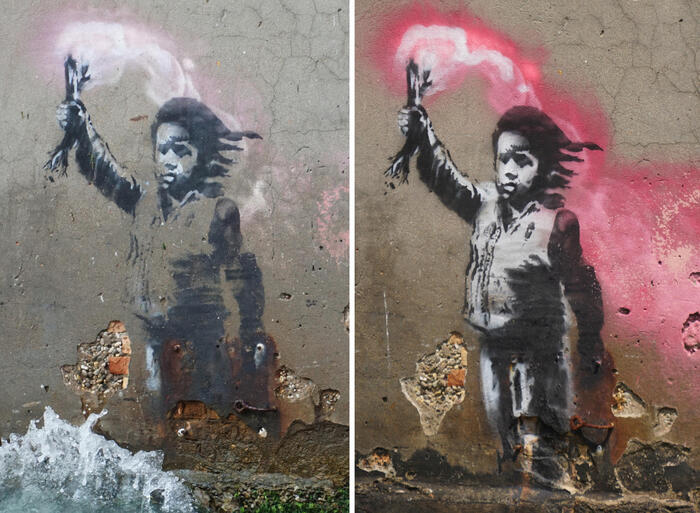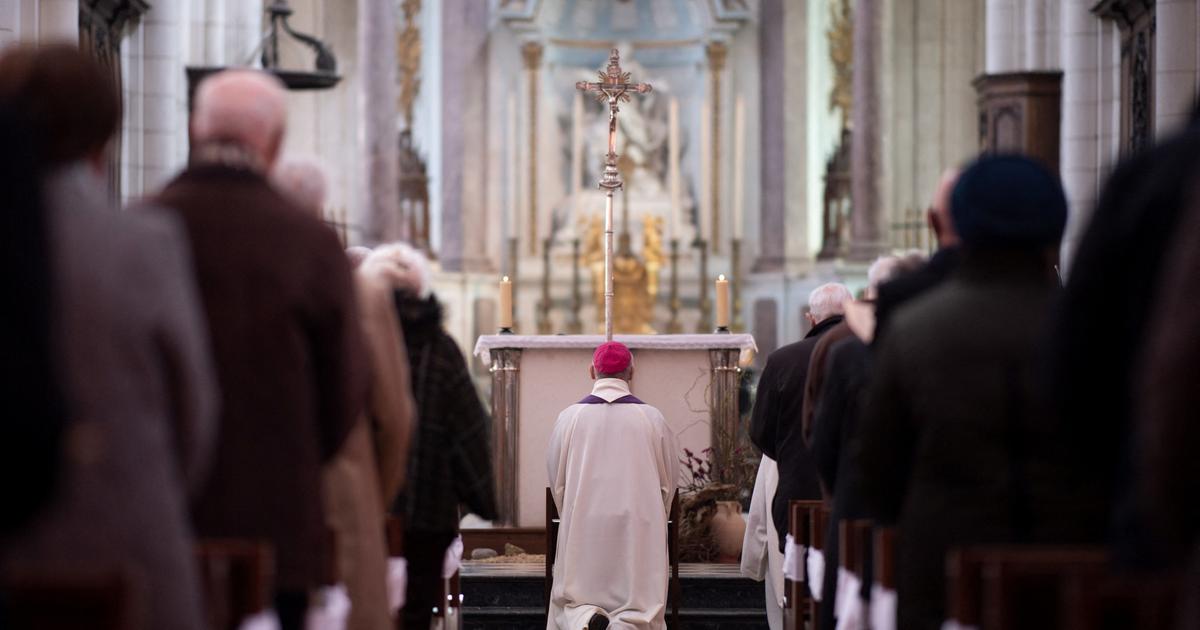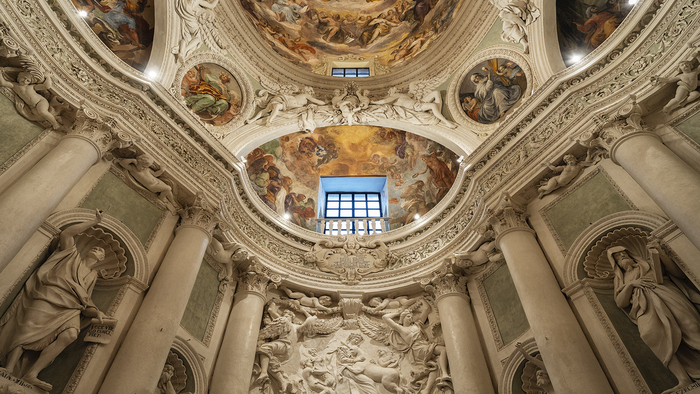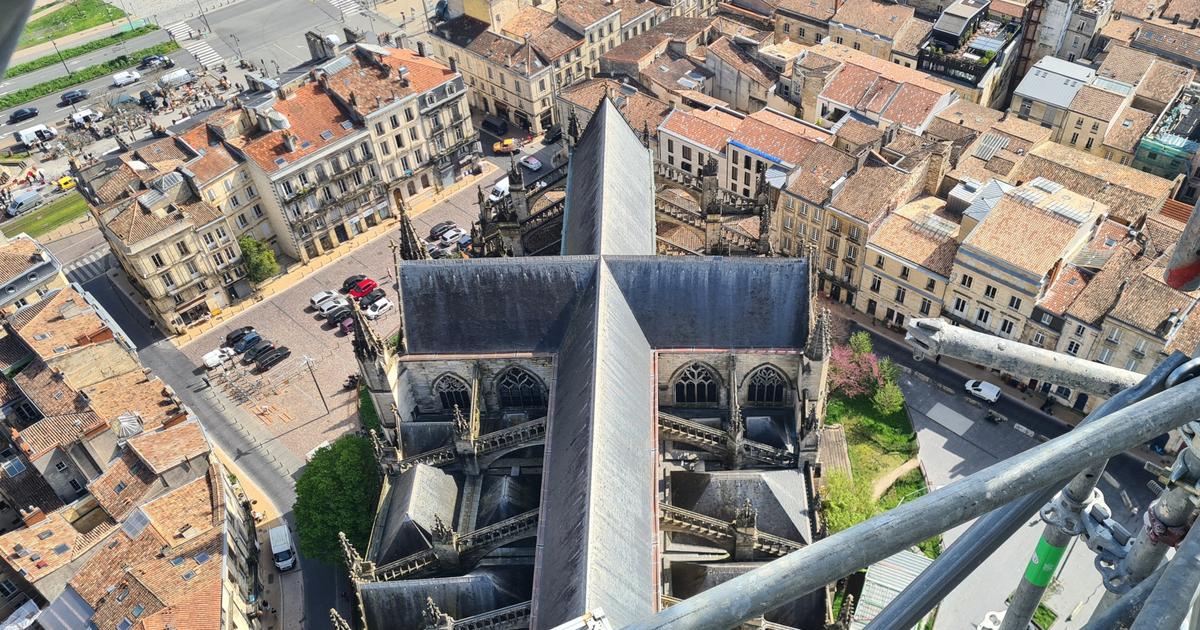A bleak and homogeneous contemporary cement, clad like a leech between the charming 13th century rubble stone.
In the Castilian village of Castronuño, about twenty kilometers from Tordesillas (Spain), the Church of Santa María del Castillo has for centuries its bell tower and its aging apse over the bluish course of the Duero.
In early November, however, residents of Castronuño discovered strange new blemishes on the sacred building.
More and more wrinkled over time, cracks abound on the medieval building.
The scars recently identified, however, had nothing to do with natural scars and all of a more human affront.
That of an amateur "restoration".
Read alsoThe restoration of a Spanish Christ turns into a massacre
The church now exhibits tongues of cement roughly slipped into the bottom of several cracks, around a window located nearly 4 meters from the ground, or even applied to other fragile sections of the medieval building. A shame for a monument registered since 1962 on the cultural heritage list (BIC) of the province of Castile and León because of its late Romanesque architecture. These gross consolidation operations, noticed during a photo report, immediately moved the inhabitants of the village.
"Our inscribed monument has suffered aesthetic damage which must be repaired,"
the mayor of Castronuño, Enrique Seoane (IU), told the daily
El Español
on November 7
.
"It's an attack on a historic monument
, was also moved a the waiter of a local bar, questioned on November 10 by
El País
.
If we ever catch the one who did that, we would have to shake him badly! "
Spain, land of restoration
The enigmatic restorer of Castronuño's heritage may never be found. According to heritage specialists dispatched to the site by the archdiocese, the deposit of the different layers of cement identified in the Church of Santa María del Castillo would be old, and would date from around 20 years ago. The operation has since gone completely unnoticed. Quite the opposite of other disastrous restorations which have also made the headlines of the Spanish press in recent years. The most famous of these concerned the massacre, in 2012, of the canvas of an Ecce Homo dating from the 19th century; kept in a church in Borja (Zaragoza), it had been very daringly repainted by an 81-year-old amateur restorer. More recently, the high relief ofa shepherdess adorning an art deco building in the city of Palencia (Castile and León) was also not spared by the generous chisel stroke of its enlightened restorer.
Read alsoAn artificial intelligence to reconstruct the frescoes of Pompeii
The long discretion enjoyed by the “alterations” illegally carried out in Santa María del Castillo, highlights the lack of attention to which the church is the object, observes the mayor of the municipality.
"The church accumulates deficiencies
," said Enrique Seoane for
El Español.
There are leaks in the roof, cracks on some walls, great wear and tear on the stone as well as the brick used in the sacristy. ”
The general state of decay of the building deeply exasperates the local elected representative.
“The monuments registered with the BIC are supposed to benefit from a protection which goes beyond paper. The junta
(Spanish equivalent of the French regional councils, editor's note)
de Castille-et-León must do everything in its power to ensure that the failings of the building are repaired and that the church can be preserved as it deserves
”, he insisted.
"This story of cement, it's anecdote on the side,"
he still notes with bitterness to the newspaper
El País
.
How to explain that nothing has been done to preserve this heritage church? According to the mayor of Castronuño, the fault lies neither more nor less to the very status of the building, which has not been the subject of work for nearly 60 years.
"Nothing can be done without the green light from the archdiocese and the heritage agency, so no money has ever been paid
", annoyed Enrique Seoane, on November 10, in an interview with
El País
. Currently busy restoring the altarpieces kept in the choir of the church, the archbishopric confirmed to
El Español
that a new intervention would soon be scheduled in order to consolidate the building.
A precision suitable to reassure the defenders of the Castilian heritage.
After the excitement, the Spanish authorities seem determined not to let this dirty story of cement concrete.









